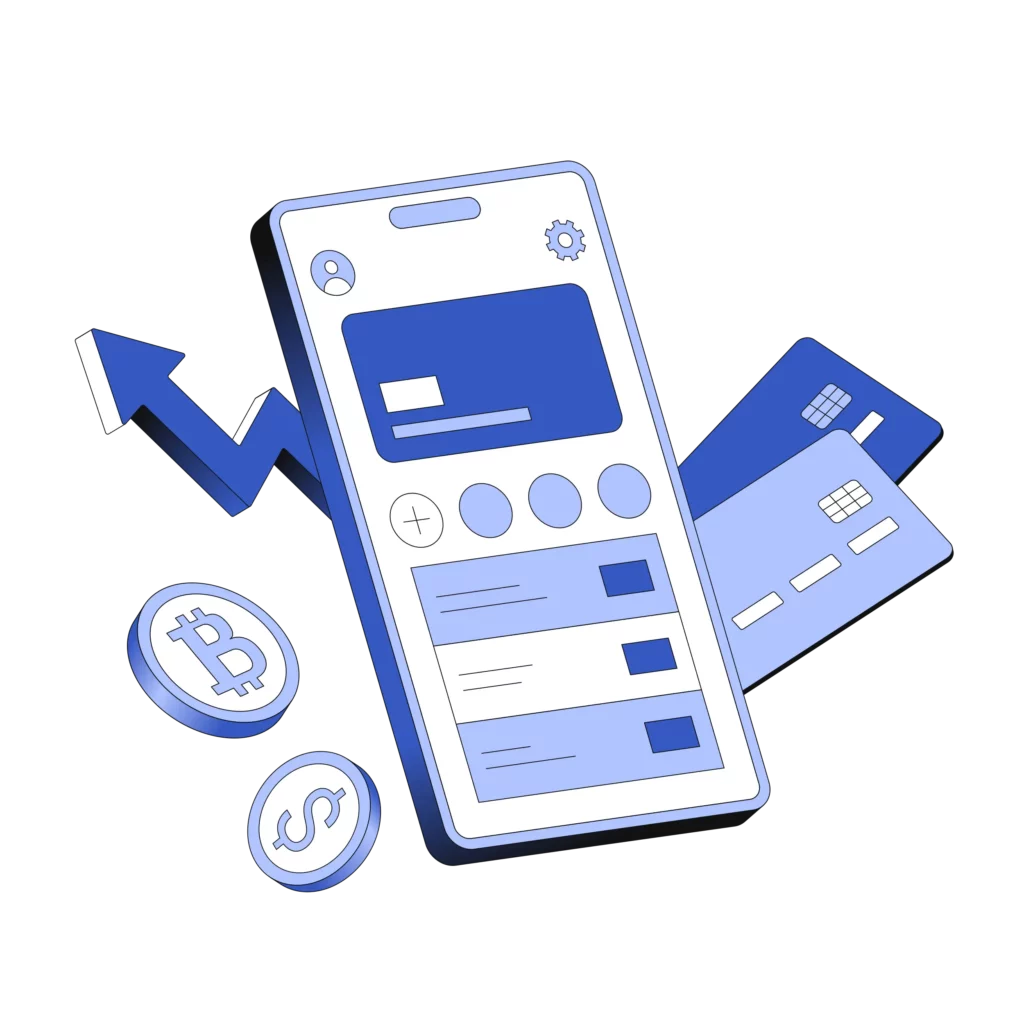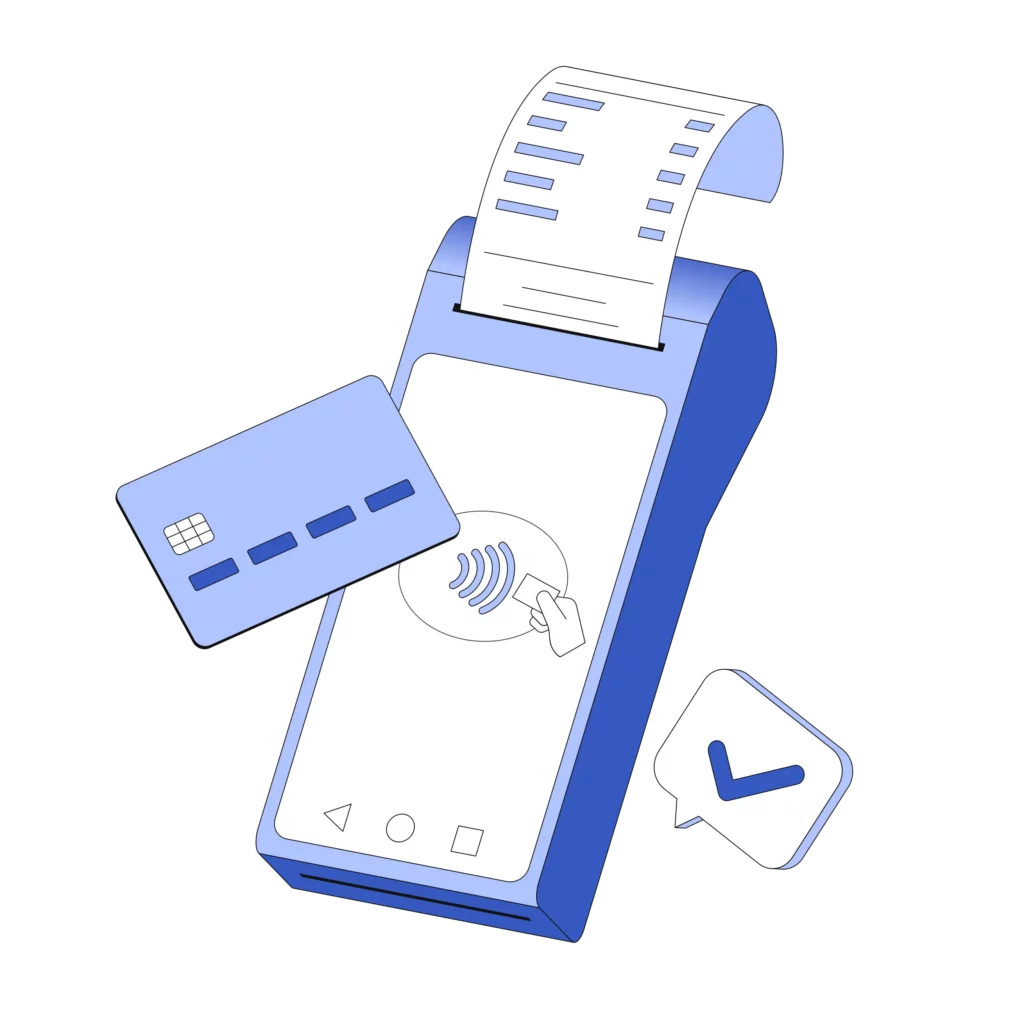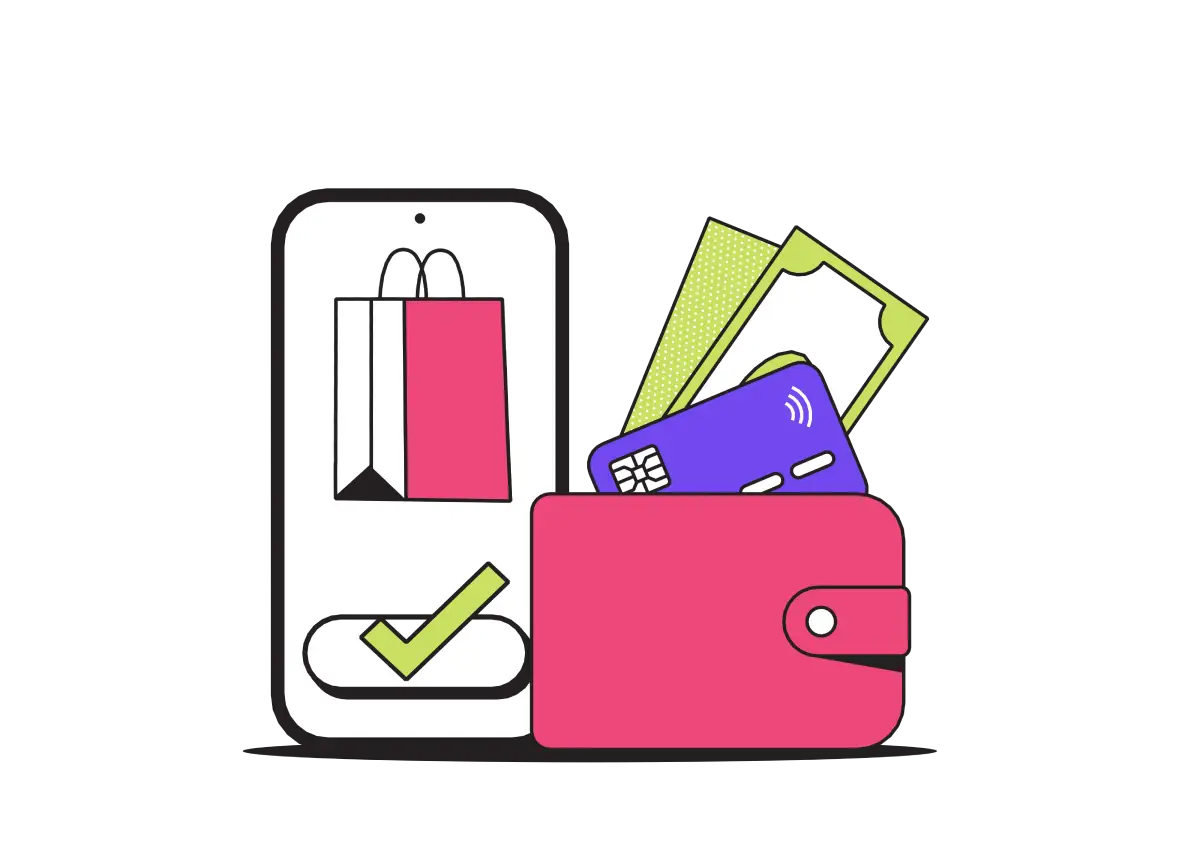Digital payments have become standard for everyday purchases. In 2024, 92% of Americans used a digital payment method.[1]McKinsey & Company. “State of Consumer Digital Payments in 2024.” Accessed August 6, 2025. This spans everything from online orders to tap-to-pay in-store transactions, mobile wallets like Apple Pay, and even in-app purchases.
Digital payment technologies aren’t limited to eCommerce. They’re happening at farmers markets, food trucks, salons, and brick-and-mortar retailers. At this point, if your business isn’t implementing digital payment solutions, you risk losing sales by not keeping up with market trends. This guide breaks down what digital payment services are, why they matter, and how to integrate them into your business effectively.
Key Takeaways
- Digital payment solutions include online checkout systems, mobile wallets, and tap-to-pay contactless payments.
- Digital payment technologies can streamline payment flows, boost security, and simplify financial management for businesses and customers.
- Virtually any business model can benefit from using digital payment services, whether they sell online, in-store, or on the move.
What Are Digital Payment Services?
Digital payment services are tools that let customers pay electronically without using cash or paper checks. These services streamline the payment process by offering fast, secure, and convenient alternatives that can be used online or in-store. With the rise of smartphones and internet connectivity, these services have become an essential part of everyday life for both consumers and merchants in today’s digital-first economy.

Types of Digital Payment Services
As the world continues to shift toward cashless transactions, various types of digital payment services have emerged to meet different needs and preferences. Here’s a quick breakdown of some well-known digital payment solutions:
- Credit Card Processing: The most common form is credit and debit cards — either swiped, inserted, or keyed in.
- NFC Payments: Contactless payments enable users to tap a card or device to pay quickly and securely via near-field communication technology.
- Mobile Payment Solutions: Accounting for more than half of all global transactions, apps like Apple Pay, Google Pay, and Samsung Pay let customers pay with mobile payment solutions.[2]Statista. “Market Share of Digital/Mobile Wallets in Total eCommerce and POS Transaction Value Worldwide in 2024 with a Forecast for 2030, by Region.” Accessed August 6, 2025.
- Peer-to-Peer (P2P) Payments: Apps like Venmo, PayPal, and Cash App enable people to pay you or send you money directly.

How Digital Payments Work

Regardless of the type of digital payment solution, all of these follow the same chain: the customer provides their payment information, a gateway securely transmits it, the processor confirms the transaction, and the funds are routed to your account (minus any fees).
Merchants may also accept cryptocurrencies — Bitcoin, Ethereum, Litecoin, etc. — through the blockchain, a decentralized system that records financial transactions. These currencies may be used via payment gateways to exchange for fiat, but can also be exchanged directly via blockchain technology and crypto wallets.
Benefits of Using Digital Payment Services
Using digital payment services can provide a wide range of benefits for your business.
- Faster Transactions and Improved Cash Flow: Digital payments are quicker than cash (no need for change) or checks (usually settle slower).
- Security and Fraud Prevention: Most digital payment providers use encryption, tokenization, and fraud-monitoring tools to protect you and your customers.
- Expanded Customer Reach: Digital payments allow businesses to serve more customers, both in-store and online, by offering additional payment options.
- Simplified Bookkeeping and Reporting: Digital payment tools often sync with your accounting software, reducing manual data entry and mistakes.
How to Choose the Right Digital Payment Service for Your Business
Not every digital payment service provider suits every business. Here are some considerations to help you pick a provider that aligns with your business needs.
- Sales Channels: Do you sell in a store? Online? On the go? Your provider should support the way you sell your products or services.
- Accepted Methods: Compare which types of payments (cards, wallets, crypto) the provider supports.
- Integration Needs: Check if it plugs into your website, point-of-sale system, and accounting tools.
- Transaction Fees: Some providers charge flat transaction rates, others monthly fees or a hybrid model.
- Added Features: Look for extras that can boost sales or improve customer experience — like Buy Now, Pay Later (BNPL) options, customer insights, or loyalty tools.
Here are some examples of these considerations in action:
- Farmers Market Vendor: A mobile credit card reader is ideal for this on-the-go operation.
- Online Store: You’ll want to consider payment gateway options that work with your cart and offer global tax support.
- Regulated Business: Look for a provider that ensures industry-specific compliance for both in-store and online sales.
What Makes a Digital Payment Service Secure (and Why It Matters)
Digital payments rely on the transfer of sensitive personal data. So if your system isn’t secure, your customers could pay the price. That’s why security and compliance should be top priorities when choosing a provider. Here are a few key features to look for as you evaluate your digital payment service options.

PCI DSS Compliance
Payment Card Industry Data Security Standard (PCI DSS) is a set of guidelines that help organizations that process credit cards protect the sensitive associated information. Your digital payment provider should meet PCI compliance standards, as this is a foundational step in protecting against data breaches and credit card fraud.

Data Encryption and Tokenization
Encryption and tokenization are complementary methods of protecting sensitive payment data. Encryption transforms credit card data into an unreadable format requiring a decryption key to access. Tokenization replaces sensitive data with a meaningless token, which has no inherent value. Together, they protect in-transit and stored customer card information.

Fraud Detection Systems
Modern fraud detection systems leverage a variety of technologies to identify and prevent fraudulent transactions. Methods such as real-time monitoring, machine learning algorithms, and advanced transaction analysis all contribute to robust fraud detection systems to protect businesses and customers.
Setting Up Your Digital Payments: Integration Tips for a Smooth Start
The basic steps to implement a digital payment system include:

- Selecting a Payment Gateway: A payment gateway serves as the bridge between your processor and checkout. This could be a point-of-sale terminal, a mobile app, or software on your website. Conduct research to understand how your customers typically pay and ensure your gateway supports every desired payment option.
- Integrating with Your Website or POS: Ensure your payment gateway syncs with all your tools — from your online store to your scheduling, inventory, and accounting systems. Real-time updates save time and cut errors.
- Training Your Team: Ultimately, your team must understand what payments your business can accept, from traditional digital payments to alternative payment methods. Train your staff on how to accept payments, process refunds, and run security best practices.
Ready to Start? Secure the Right Payment Partner for Long-Term Growth
The right digital payment services provider should help your business grow, not complicate it. At PaymentCloud, we specialize in securing flexible, compliant, and scalable payment services — even for high-risk industries. We also provide flexible setup and secure APIs to integrate with your existing system. Plus, we’re always here to help you if you have any questions or need help with your system.
If your business is ready to grow, contact PaymentCloud today to discuss a tailored, secure digital payment processing solution that fits your business. When you’re ready to level up your payment setup, our team is here to guide you every step of the way.
Digital Payment Services FAQs
Can digital payment services integrate with my existing accounting software?
Most digital payment services can work with your existing systems, so you don’t have to overhaul everything. Just make sure they support your accounting software before you sign up — not all of them do.
How can I ensure my digital payment system complies with industry regulations?
When searching for a digital payment system, look for providers with PCI DSS certification, strong encryption, tokenization, and fraud detection tools. Don’t be afraid to ask questions.
What security features should I prioritize to prevent fraud?
Some of the top fraud prevention features for digital payment services include PCI compliance, encrypted data, tokenization, real-time monitoring, and pattern-flagging AI-driven systems.






